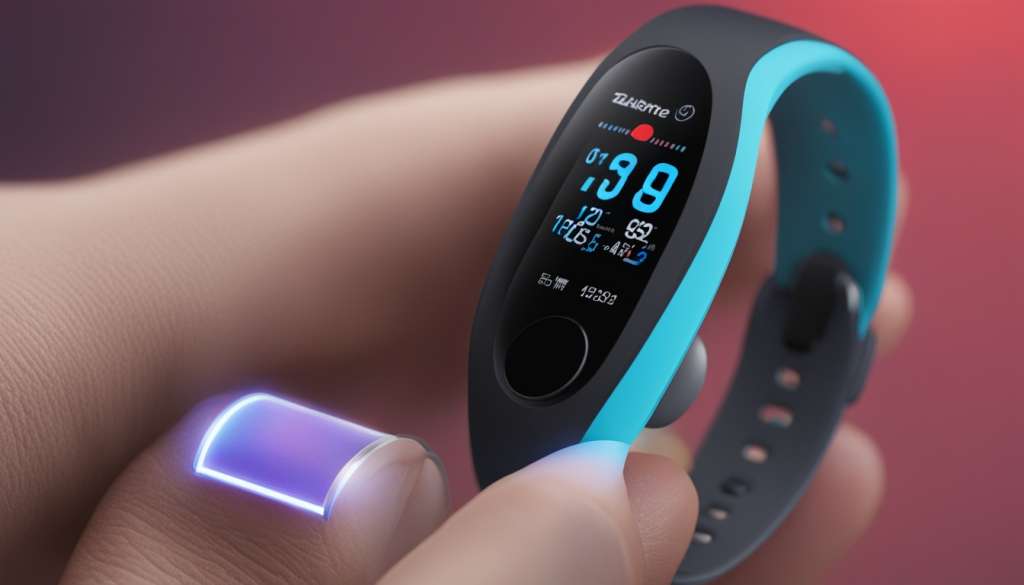Learn how to control your body’s temperature with a detailed guide on temperature regulation. This process is vital for your health and comfort. It helps you manage heat and stay at a comfortable temperature in various situations.
Your body has a complex system to keep you at the right temperature. The hypothalamus acts like a thermostat, controlling your body’s heat. It gets signals from all over your body to keep your core temperature steady.
Knowing what’s normal for your body temperature is important. The usual temperature is 98.6°F (37°C), but it changes during the day. Things like exercise, your surroundings, and your menstrual cycle can affect your temperature.
This guide will give you tips for staying comfortable in different places. You’ll learn how to pick the right clothes and adjust your environment. This helps you work with your body’s natural way of controlling temperature. It’s useful whether you’re an athlete or just want to sleep better.
Understanding Thermoregulation: The Body’s Heat Management System
Your body has a special way to keep its temperature steady. This is called thermoregulation. It makes sure your core temperature stays the same, even when the weather or your activity changes.
What is thermoregulation and why it matters
Thermoregulation is how your body controls its temperature. It keeps your core at about 98.6°F (37°C). This is key for your organs to work right. If your temperature gets out of balance, enzymes and proteins can’t do their job well, causing health problems.
The role of the hypothalamus in temperature control
The hypothalamus is a small part of your brain that acts like a thermostat. It gets info from temperature sensors all over your body. When it notices your core temperature changing, it makes you warm up or cool down.
Normal body temperature ranges and variations
People often say the normal body temperature is 98.6°F, but it’s better to think of it as a range. Your temperature changes during the day, usually being lowest in the morning and highest in the afternoon.
| Time of Day | Average Temperature |
|---|---|
| Early Morning (4 AM) | 97.7°F (36.5°C) |
| Late Afternoon (4 PM) | 99.5°F (37.5°C) |
Things like your age, how active you are, and your menstrual cycle can change your body temperature. Knowing this helps you keep an eye on your health and spot any issues early.
The Science Behind Body Temperature and Sleep
Your body temperature and sleep are closely linked. Understanding this connection can help you improve your sleep quality and overall health. Let’s explore how your core temperature affects your sleep cycles and what you can do to create the ideal sleep environment.
Core Temperature and Sleep Cycles
Your core temperature naturally drops as bedtime approaches. This decrease signals your body to prepare for sleep. Throughout the night, your temperature continues to fluctuate, reaching its lowest point around 4 AM. This coincides with your deepest sleep phase, showing how closely your core temperature and sleep cycles are intertwined.
Body Temperature and Sleep Quality
The relationship between body temperature and sleep quality is crucial. When your temperature doesn’t drop as it should, you might find it hard to fall asleep or stay asleep. Maintaining a consistent temperature throughout the night can lead to more restful sleep and fewer disruptions.
Finding the Right Bedroom Temperature
To support your body’s natural temperature regulation, it’s important to set the right bedroom temperature. For most adults, the optimal bedroom temperature falls between 60°F and 67°F (15.6°C to 19.4°C). This range helps maintain your core temperature at an ideal level for sleep, promoting better sleep quality and duration.
| Temperature Range | Effect on Sleep |
|---|---|
| 60°F – 67°F (15.6°C – 19.4°C) | Optimal for most adults |
| Below 60°F (15.6°C) | May cause discomfort and restlessness |
| Above 67°F (19.4°C) | Can lead to overheating and poor sleep quality |
By paying attention to your body temperature and creating the right sleep environment, you can significantly improve your sleep cycles and overall sleep quality. Remember, everyone’s needs are slightly different, so feel free to adjust your bedroom temperature within this range to find what works best for you.
Factors Influencing Body Temperature Regulation
Your body’s temperature is a complex process influenced by many factors. Knowing these can help you stay comfortable and healthy.
Environmental factors are key to how your body keeps its temperature stable. Hot or cold weather, humidity, and altitude can change your core temperature. Extreme conditions make your body work harder to stay at its ideal temperature.
Your metabolism also affects your body temperature. A fast metabolism means you might feel warmer. This is why you might get hot after eating a big meal or exercising hard. On the other hand, a slow metabolism can make you feel colder.
Hormonal changes can also cause your temperature to go up and down. For women, this can happen during the menstrual cycle, making your temperature change by up to 1°F. Pregnancy and menopause also affect how your body regulates temperature because of hormonal shifts.
| Factor | Effect on Body Temperature |
|---|---|
| High Humidity | Increases perceived temperature |
| Intense Exercise | Raises core temperature |
| Fever | Elevates body temperature |
| Alcohol Consumption | Can lower core temperature |
Your sleep environment affects how well you regulate your temperature at night. A cool bedroom (around 65°F) and breathable bedding can help you sleep better. They support your body’s natural temperature drop while you rest.
Knowing these factors helps you manage your body temperature better. This way, you can stay comfortable in different activities and environments.
Temperature Regulation Guide: Tips for Maintaining Thermal Comfort
Keeping your body at a comfortable temperature is key to feeling good and staying healthy. This guide will help you manage your thermal comfort through smart choices in clothing, environment, and diet.

Clothing Choices for Temperature Management
Your wardrobe plays a big role in how you feel temperature-wise. In hot weather, pick light, breathable fabrics like cotton or linen. These let air flow and sweat evaporate. For cold days, layer up. Start with a thin base layer, add an insulating middle layer, and top it off with a wind-resistant outer layer. This way, you can adjust as needed throughout the day.
Environmental Adjustments for Optimal Thermoregulation
Your surroundings greatly impact your thermal comfort. Use fans or air conditioning to cool down in summer. In winter, space heaters can warm up chilly rooms. For better sleep, keep your bedroom cool, around 60-67°F (15-19°C). Use breathable bedding materials, such as cotton sheets or a natural latex mattress, to help control your body temperature while you rest.
Dietary Considerations for Body Temperature Control
What you eat and drink affects your body temperature too. Spicy foods can make you feel warmer temporarily. On hot days, cool foods like salads or chilled soups can help. Staying hydrated is crucial – drink water regularly, even if you don’t feel thirsty. In cold weather, warm beverages like herbal tea can help you feel cozy from the inside out.
| Temperature | Clothing | Environment | Diet |
|---|---|---|---|
| Hot | Light, breathable fabrics | Use fans, A/C | Cool foods, hydration |
| Cold | Layered clothing | Space heaters | Warm beverages |
By applying these tips, you can maintain better thermal comfort in various conditions. Remember, everyone’s body is different, so pay attention to what works best for you.
The Impact of Exercise on Body Temperature
Exercise is key to how your body controls its temperature. When you exercise, your core temperature goes up. This makes your body cool itself down. Knowing this can help you do better in your workouts and recover faster.
Physical Activity and Core Temperature
When you exercise, your muscles make heat. This makes your core temperature go up. Your body cools down by sweating. The harder you exercise, your core temperature can go up by 2-3 degrees Fahrenheit.
Cooling Strategies for Athletes
Here are ways to keep your body cool while working out:
- Stay hydrated before, during, and after exercise
- Wear moisture-wicking clothing to help sweat evaporate
- Choose cooler environments or times of day for outdoor activities
- Use cooling towels or ice vests during intense training sessions
Post-Exercise Temperature Regulation
After your workout, your body needs to cool down. Here’s how to help it:
- Perform a gradual cool-down with light exercises
- Take a cool shower to lower your body temperature
- Consider ice baths for intense workouts or hot weather training
- Drink cool fluids to replenish lost fluids and aid in cooling
Using these strategies can help you manage your body temperature during exercise. This can improve your performance and recovery.
Thermoregulation in Extreme Environments
Your body has to work hard in extreme heat or cold. It’s key to know how to keep your body temperature stable for safety and comfort.
In extreme heat, your body cools down by sweating and increasing blood flow to the skin. But, this can cause heat stress if not managed right. To avoid overheating:
- Stay hydrated
- Wear light, breathable clothing
- Seek shade during peak sun hours
- Take frequent breaks in cool areas
Extreme cold brings its own set of challenges. Your body tries to keep warm by reducing blood flow to your hands and feet and making you shiver. To stay warm:
- Dress in layers
- Keep your head and hands covered
- Stay dry and out of the wind
- Maintain physical activity to generate body heat
Getting used to extreme temperatures helps your body adjust. Slowly getting used to it lets your body change how it handles the heat or cold over time.
| Environment | Acclimatization Time | Key Adaptations |
|---|---|---|
| Hot Climate | 10-14 days | Increased sweat rate, lower heart rate |
| Cold Climate | 14-21 days | Improved circulation, increased metabolism |
Getting ready and slowly getting used to extreme conditions is key for safety. Always pay attention to your body and get medical help if you show signs of serious heat or cold stress.
Health Conditions Affecting Temperature Regulation
Your body’s ability to keep its temperature stable is key to staying healthy. Some health issues can mess with this balance, causing serious problems. Let’s look at common health concerns related to temperature and how they affect you.
Fever and Its Role in Fighting Infections
Fever is how your body fights off infections. When your temperature goes over 100.4°F (38°C), it means your immune system is fighting hard. This heat makes it tough for bad germs to live and spread.
Hypothermia and Hyperthermia: Causes and Prevention
Hypothermia is when your body temperature drops below 95°F (35°C). It usually happens from being too cold or being in cold water for too long. Hyperthermia, on the other hand, is when your body gets too hot, often from being in the heat or doing too much in the sun.
| Condition | Temperature Range | Common Causes | Prevention Tips |
|---|---|---|---|
| Hypothermia | Below 95°F (35°C) | Cold exposure, cold water immersion | Wear appropriate clothing, avoid prolonged exposure to cold |
| Hyperthermia | Above 104°F (40°C) | Heat exposure, overexertion in hot conditions | Stay hydrated, seek shade, use cooling techniques |
Thermoregulatory Dysfunction and Its Symptoms
Thermoregulatory dysfunction can come from medical conditions or some medicines. If you often have trouble keeping your temperature stable, sweat a lot, or have trouble with body temperature, you might have this issue. It’s important to catch these signs early to get the right help and fix the problem.
Technology and Tools for Temperature Monitoring
Now, tracking your body temperature is easy with advanced devices. These tools give you insights into your health. They help you catch potential issues early.
Wearable technology has changed how we track temperatures. Smart watches and fitness bands have sensors to monitor your body temperature. This info helps you understand your sleep, detect illness early, and track your menstrual cycle.

Smart thermostats take temperature control further. They learn your preferences and adjust your home’s temperature automatically. They make your sleeping area perfect by cooling it at night and warming it before you wake.
Infrared thermography offers detailed temperature info. This method creates heat maps of your body. It shows temperature changes and is great for finding inflammation or circulatory issues.
| Technology | Key Features | Applications |
|---|---|---|
| Wearable Devices | Continuous monitoring, Data trends | Sleep tracking, Health monitoring |
| Smart Thermostats | Automatic adjustments, Learning capabilities | Home comfort, Energy savings |
| Infrared Thermography | Non-invasive, Full-body imaging | Medical diagnosis, Performance optimization |
Using these devices daily gives you insights into your body’s health. Whether you’re an athlete or just want to stay healthy, these tools provide a lot of info. They’re at your fingertips.
Natural Remedies and Lifestyle Changes for Better Temperature Control
Keeping your body at the right temperature is key for good health. You can use natural remedies and change your lifestyle to control your body’s temperature better. Let’s look at some ways to naturally regulate your body’s heat.
Herbal Supplements for Temperature Regulation
Some herbal supplements can affect your body temperature. Ginger and cayenne pepper can make you warmer. Peppermint and chamomile can cool you down. Always talk to a doctor before trying new supplements.
| Herb | Effect on Body Temperature | Usage |
|---|---|---|
| Ginger | Increases thermogenesis | Tea, capsules, or fresh root |
| Peppermint | Cooling effect | Tea or essential oil |
| Chamomile | Cooling effect | Tea or tincture |
| Cayenne Pepper | Increases thermogenesis | Capsules or added to food |
Mindfulness and Relaxation Techniques
Using mindfulness and relaxation can help control your body temperature. Deep breathing and meditation can lower stress and temperature changes. Try these in your daily life for better temperature control.
Hydration for Temperature Management
Drinking enough water is key for managing temperature. Water helps by making you sweat and keeping your blood flowing. Drink at least 8 glasses of water a day, more when it’s hot or you’re active.
Using these natural remedies and lifestyle changes can help you control your body’s temperature. Listen to your body and adjust these methods as needed for you.
Conclusion: Mastering Your Body’s Thermostat for Optimal Health and Performance
Your body’s temperature is key to your health and how well you perform every day. By understanding how your internal thermostat works, you can take charge of your health. Factors like the environment and lifestyle choices can help your body stay at the right temperature.
Being aware of your body is crucial for managing your temperature. This means knowing how activities, foods, and places affect your body’s heat. With this knowledge, you can make better choices to boost your physical performance and life quality. Simple changes, like picking the right clothes or adjusting your sleep space, can make a big difference in how comfortable you feel.
Good health is more than just eating well and working out. It’s also about keeping your body’s internal environment balanced, including your temperature. By using the tips from this guide, you’re on your way to better sleep, improved physical skills, and better overall health. Your body’s thermostat is a powerful tool. Learning to use it well can lead to a healthier and more comfortable life.

